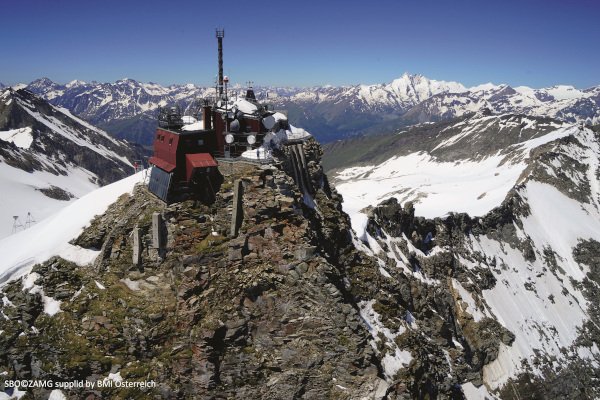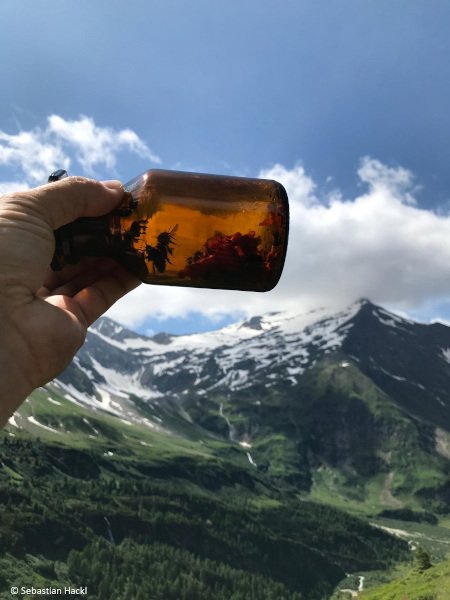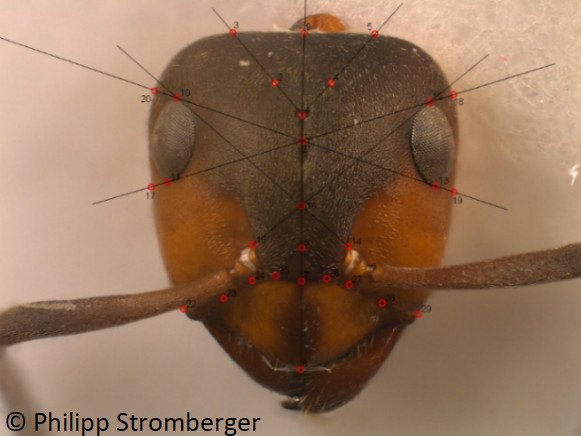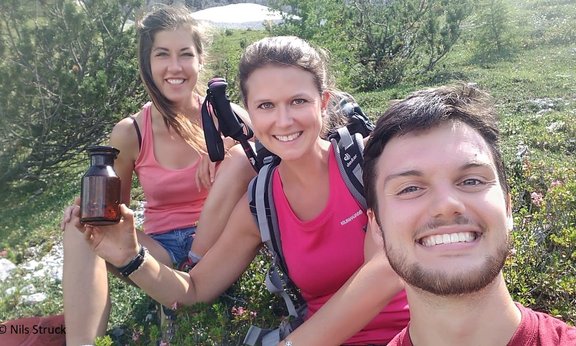I have been always fascinated by the forest ecosystem. So that’s why I decided to study forestry and wood science after school, and I have never regretted my decision. But during the many field courses, I noticed that the small inhabitants of the forest interested me even more than the trees. And so I started to focus on insects during my studies, soon also beyond the forest. After writing two graduation theses on this topic and finishing my studies, it was clear to me that I wanted to work with insects in the scientific environment.
I got this opportunity by the INTERREG-A-project „ProtectAlps“, which was initiated by the Bavarian Environment Agency. Together with the Research Group Molecular Ecology of the University of Innsbruck, the effects of hardly degradable chemicals, the so called persistent organic pollutants (short: POPs) on insects should be investigated. These POPs include industrial chemicals as well as certain internationally regulated pesticides like DDT. I think it's a surprise to many of us that some of these substances, which were banned in Europe a long time ago, are still present in the environment! By accumulating in the organism and acting toxically, they could be (co-)responsible for the decline of insects.

The special thing in our project are unique measurements of air concentrations in our study areas. This is done by our project partners, the Environmental research station Schneefernerhaus on the Zugspitz mountain (Germany) and the Sonnblick Observatory at Hoher Sonnblick mountain in the national park Hohe Tauern (Austria). The task of my PhD is to combine these values with data on insects. For this, I collect insects in the study areas. What a great experience to work on the mountains in summer! To compare both study sites, we have to investigate the same species in both areas.

After sampling, the POP body burdens are measured by the ultratrace laboratories of the Environment Agency Austria. What is trickier, though, and that’s my task, together with others, is to investigate the effect on the morphology of insects.
With the method of geometric morphometrics, photographs of basically symmetrical structures, like the wings of bumblebees or the ants‘ heads, are analysed in depth with a computer program.

The project contributes to the investigation of a possible factor for the decline of insects. In particular, data on the status of insect populations in supposedly uncontaminated areas dearly needed. For me, it is something special to be involved in the research on insect decline and to have these unforgettable field trips in the summer!
Veronika Hierlmeier
Research Group: Molecular Ecology
veronika.hierlmeier@lfu.bayern.de

